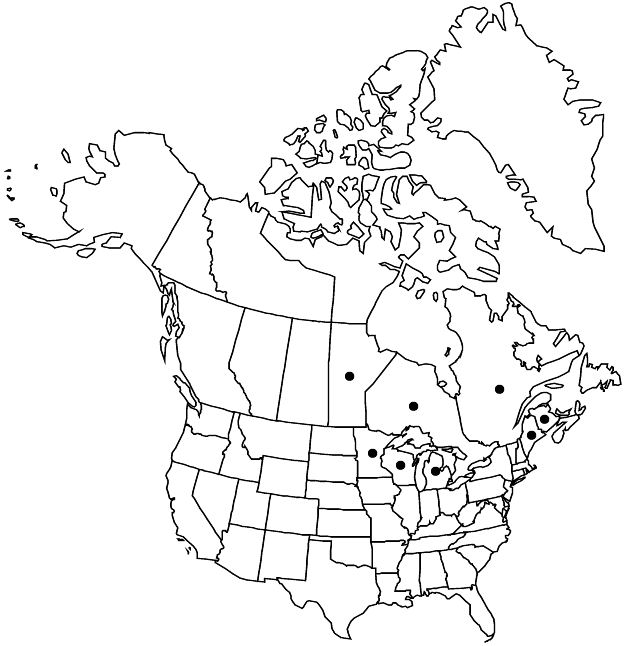Difference between revisions of "Viola novae-angliae"
Rhodora 6: 226, plate 59. 1904.
FNA>Volume Importer |
imported>Volume Importer |
||
| Line 63: | Line 63: | ||
|publication year=1904 | |publication year=1904 | ||
|special status=Endemic | |special status=Endemic | ||
| − | |source xml=https:// | + | |source xml=https://bibilujan@bitbucket.org/aafc-mbb/fna-data-curation.git/src/bb6b7e3a7de7d3b7888a1ad48c7fd8f5c722d8d6/coarse_grained_fna_xml/V6/V6_238.xml |
|genus=Viola | |genus=Viola | ||
|species=Viola novae-angliae | |species=Viola novae-angliae | ||
Revision as of 23:38, 27 May 2020
Plants perennial, acaulescent, not stoloniferous, 5–50 cm; rhizomes thick, fleshy. Leaves basal, 2–8, ascending to erect; stipules linear-lanceolate to broadly lanceolate, margins entire, sometimes distally glandular, apex acute; petiole 5–25 cm, densely pubescent; blade unlobed, narrowly ovate to narrowly deltate, 3.5–7 × 2–5 cm, base cordate, margins uniformly crenate to serrate, ciliate or eciliate, apex acute, surfaces usually glabrous, rarely pubescent. Peduncles 3–25 cm, glabrous or pubescent. Flowers: sepals lanceolate to ovate, margins ciliate or eciliate, auricles 1–2 mm; petals light to dark blue- or dark purple-violet or reddish purple, lowest and sometimes lateral 2 purple-veined, lateral 2 bearded, lowest bearded or beardless, 15–25 mm, spur same color as petals, gibbous, 2–3 mm; style head beardless; cleistogamous flowers on prostrate to ascending peduncles. Capsules ellipsoid, 5–12 mm, glabrous. Seeds beige, mottled to bronze, 1.5–2.5 mm. 2n = 54.
Phenology: Flowering Apr–Jun.
Habitat: Gravelly, wet, rocky shores of lakes and streams, meadows
Elevation: 0–100 m
Distribution

Man., N.B., Ont., Que., Maine, Mich., Minn., Wis.
Discussion
L. E. McKinney (1992) considered Viola novae-angliae to be a variety of V. sororia; N. L. Gil-Ad (1997) treated it as a distinct species. H. E. Ballard and S. C. Gawler (1994) also considered V. novae-angliae distinct and suggested it might be a hybrid between V. sagittata and V. sororia. Viola novae-angliae appears to have a close affinity with V. sororia; we recognize them here as separate species.
Selected References
None.